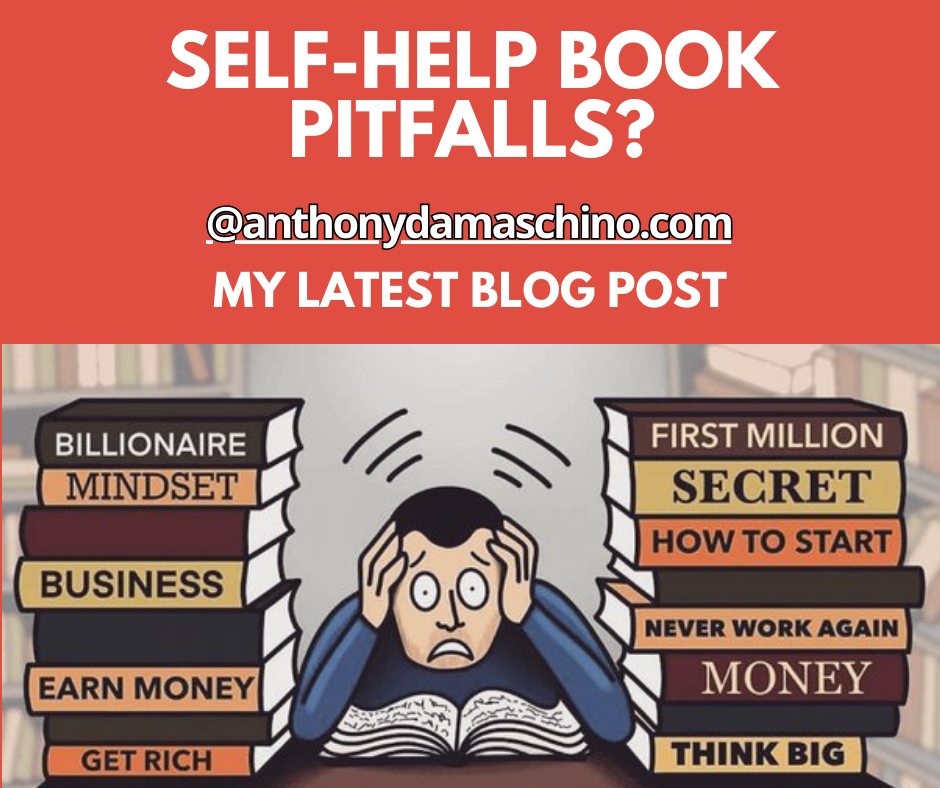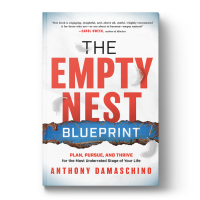Beware of The Self-Help Book Pitfalls
Jan 17, 2024 by Anthony Damaschino

Want to get rich, lose weight, get out of debt, find the love of your life, or be successful? An easy way to conquer these common life issues is to pick up the self-help book that promises the desired result and read it. If only the answer to life's problems were this simple.
One thing that most people don’t know about me is that I have been a closet personal, financial, and relationship self-help book bibliophile. As my career, interests, and personal goals have evolved throughout my life, I have dived into and explored many self-help categories in search of life’s answers. I wholeheartedly believe that there is wisdom in every book, and self-help books specifically, there is the wisdom of a well-defined problem and a proposed solution.
The typical self-help book follows a predictable structure. Most are designed to guide the reader on a journey of transformation and self-improvement. Here is the standard self-help book structure:
-
Define the problem
-
Explore the cause
-
Introduce the solution
-
Overcome obstacles
-
Achieve transformation
It is a good self-help book, and the lessons are worth your time when this structure is done well. Unfortunately, in my experience, very few self-help books deliver on this promise. The majority misses the mark. Let me explain the two big pitfalls I have observed throughout my journey.
Number one: The One-Note Premise. Here is how the one-note self-help books are written:
A problem concept is introduced by an author in chapter one with their story and several convincing supporting examples. For example, have you had trouble losing weight? You gain and lose weight through fad diets, struggling each time and always being unsuccessful. Nothing the author has tried has ever worked for them long-term. Then, in chapter two, the author introduces their personal transformation story and the solution. You will be successful by trying XYZ food plan, lifestyle change, fad thing, or exercise (basically, insert solution here). Then, the rest of the book delivers nothing new to the reader other than expounding on more examples and stories of how the solution works until the book concludes. It is a famous and profitable formula but delivers a one-note oversimplified solution in what could have been a two-chapter book.
Number two: “The Simplified Answer with a Difficult Solution.” Want to get rich? It’s very simple: buy real estate, generate positive cash flow, and create wealth for yourself over time. Unlike the One-Note Premise, this does need more explaining. And the premise is indeed true; it is a proven formula that works. They don’t say how difficult this is for most individuals to implement. For example, to succeed in real estate investing, you must find a property that works financially for you. It would be best to have financing, credit, and positive cash flow. You must figure out rent, expenses, insurance, and upkeep costs. You must personally be or pay someone to be an active landlord, ensuring that maintenance, upkeep, money, property, and legal issues are all managed well. It would be best if you also hoped that both the market value of your property and the overall economy support your investment. The premise sounds great. Great enough to buy the book. However, the solution is much more complex and ultimately too difficult for most readers to implement.
Many self-help books fall into one of these two pitfall categories. One trick to see if a self-help book fits the first description is to read the cover, then open the book to chapters two or three and see if an overall answer or solution is given. You’ll be surprised how many one-note, oversimplified books are out there. As for the ‘simple’ solution to something extraordinary, such as getting rich, losing 50 pounds, or learning the guitar or a language in 5 days, unfortunately, most things worth working towards take time and effort.
Because of my experience with the two big pitfalls, I intentionally wrote my book, The Empty Nest Blueprint, differently. My personal goal as an author was to ensure each chapter would deliver one or more of the following three things to the reader:
-
They acquire knowledge
-
They experience self-introspection / discover personal insights
-
They take action (for example, create a plan)
The Empty Nest Blueprint does follow the typical self-help journey structure noted at the beginning. But unlike self-help books that overpromised, disappointed, and fell into the one-note and pitfall traps, I wrote my book to break away from these formulas. I tested this by separating the first 16 chapters to see if they stood independently, delivering on one or more of my goals regardless of what chapter came before or after. The worst part of being a self-help book bibliophile was that I wanted to match the great self-help books and truly deliver something to the reader. Conversely, I was haunted by the determination not to fall into the pitfall traps above. It took a lot of editing, cutting, and rewriting, but in the end, I believe I achieved this goal.
I wrote The Empty Nest Blueprint for one purpose: to help others—no one-note premise. No oversimplification. Nothing too hard to implement. Nothing is easy. I want Empty Nesters to learn from data and examples, reflect and discover personal insights, create plans, and take action. If I get the formula right and achieve my goal, my readers will finish the book motivated to plan, pursue, and thrive as Empty Nesters.
